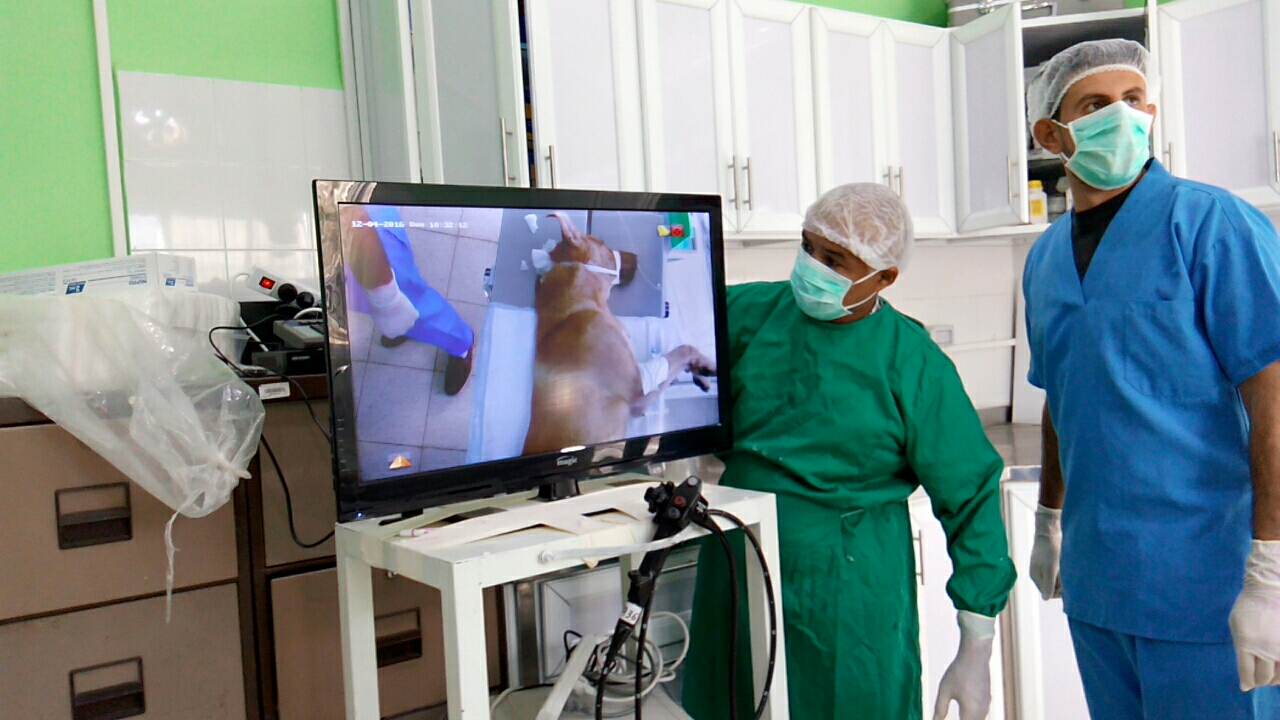
- Course title and number : introductions to Veterinary Surgery and
Anesthesia, Course number 10901316
- Instructor name : Belal Yousef Abu Helal BVMS, MVSc
- Contact information :belalsurg@najah.edu, Khadouri
campus
- Semester and academic year : 2nd semester 2020-2021
-
Compulsory/ elective : Compulsory
- Prerequisites :
10901205,10901307
- Course content ( description ) : This course covers the basic knowledge of veterinary surgery and anesthesiology. It discusses the general principles of pre-surgical, surgical and post-surgical considerations.
- Course objectives : We aim at providing knowledge, training and experience in clinical surgery in domestic animals.
- Intended learning outcomes and competences :
Upon successful completion of this course the student will acquire knowledge that enables him/her to:
1- Learn principle of sterilization, anti-sepsis and preparation for surgery (surgeon, animal, surgical instruments, and surgical theater).
2- Learn the basic methods of wound and fracture classifications and treatments.
3- Handling and treatment of critical and emergency cases and traumatization.
4- Learn methods and techniques for blood homeostasis, drains, dressing and casting.
5- Methods and techniques of local and general anesthesia.
6. Basic of radiological diagnosis
- Text book and references :
· Surgical Procedures Manual( practical )
· Bojrab MJ, Ellison GW, Slocum B. Current techniques in small animal surgery. 4th ed. Baltimore,Md.: Williams & Wilkins, 1998:xxvii, 1340
· Slatter DH. Textbook of small animal surgery. 3rd ed. Philadelphia, PA: Saunders, 2003:2 v
· Fossum TW. Small animal surgery. 2nd ed. St. Louis: Mosby, 2002:xviii, 1400
· Techniques in large animal surgery, Dean A. Hendrickson 3 nd Ed 2007
· Essential of veterinary anesthesia , A.Venugodalan 8th Ed 2002
- Assessment criteria :
This course will be evaluated by written and practical exams as
First theory exam
15%
Second theory exam
15%
Practical exam
30%
Final theory exam
40%
Total
100%
- Policy on Attendance :Theory Topics
Students are expected to attend each class period and complete each assigned project. To obtain an excused absence the student must notify the instructor and obtain permission prior to the class period or present appropriate documentation of the emergency if prior permission was not obtained. Points lost through lack of participation associated with unexcused absence will result in lower grade that may be as severe as failure of the course. If you are absent, you will be responsible for the material covered regardless of the reason for your absence.
1. First week: Introduction: History of veterinary surgery. Inflammation , Inflammation Phlegmone Sinus, Fistula
2. SECOND WEEK: Abscess , Gangrene Hernia ,Hematoma, Cyst, surgical drainage
3. Third week: Bursitis , Wound : classification, Wound healing
4. Fourth week First theory exam . Factors that affect wound healing, Complication of wound and Haemorrhage
5. Fifthweek: Shock , Fractures: classifications Fractures Repair , Treatment of fracture
6. Sixth week Tendonitis , Arthritis, Terminology of Anesthesia, Local anesthesia
7. Seventh week Second theory exams Local anesthesia : drugs, General anesthesia : stages Intravenous anesthesia : mode of action
8. Eighth week: Example of anesthetic drugs Inhalation anesthesia : mode of action
9. Final exams
Week
Lab /Topic
Instructor
1
Principles of surgery : preparation of animal for aseptic surgical operations
Principles of surgery : preparation of surgeon for aseptic surgical operationDr.Belal
2
Principles of surgery : Surgical instruments and preparation of surgical instruments(sterilizations)
Dr.Belal
3
Suture materials :classifications
Suture materials : absorbable suture and non-absorbable sutureDr.Belal
4
Suture pattern : Interrupted Sutures ( Simple interrupted , interrupted Horizontal mattress, interrupted Vertical mattress, )
Dr.Belal
5
Suture pattern: Interrupted Sutures (Cross mattress , Everting Suture , Inverting Suture , Halstead
Tension Sutures: (Quill Suture , Far - near, near-far Suture , Far - Far, Near - Near , Mayo - Mattress ) )Dr.Belal
6
Suture pattern : Continuous Sutures (Simple continuous, Continuous Horizontal mattress, Continuous Vertical mattress,. Ford interlocking , Lembert , Connell , Cushing, Parker - Kerr )
Dr.Belal
7
Mid term exam
8
Application of local anesthesia
Dr.Belal
9
Application of general anesthesia
Dr.Belal
10 and 11
Principals of veterinary Radiology
How to read the x-ray image ( anatomical radiology and fracture diagnosis , and selective cases )Dr.Belal
12and 13
Methods of fracture repair
Dr.Belal
14 and 15
Review
Dr.Belal
16
Final exams
Dr.Belal
